Tokyo’s LGBTQ+ community has weathered an intricate history, transitioning from periods of cultural acceptance to more recent challenges. While ancient Japan embraced diverse sexualities, the introduction of Western norms sparked debates that linger today. Yet, the community has carved vibrant enclaves like Shinjuku’s 2-chome, where queer culture thrives. Now, Tokyo’s LGBTQ+ scene embraces its diversity, with growing visibility and acceptance – though pockets of conservatism remain. The community’s resilience and innovative spirit continue shaping a more inclusive future for the city. What lies ahead for Tokyo’s LGBTQ+ trailblazers?
Key Points
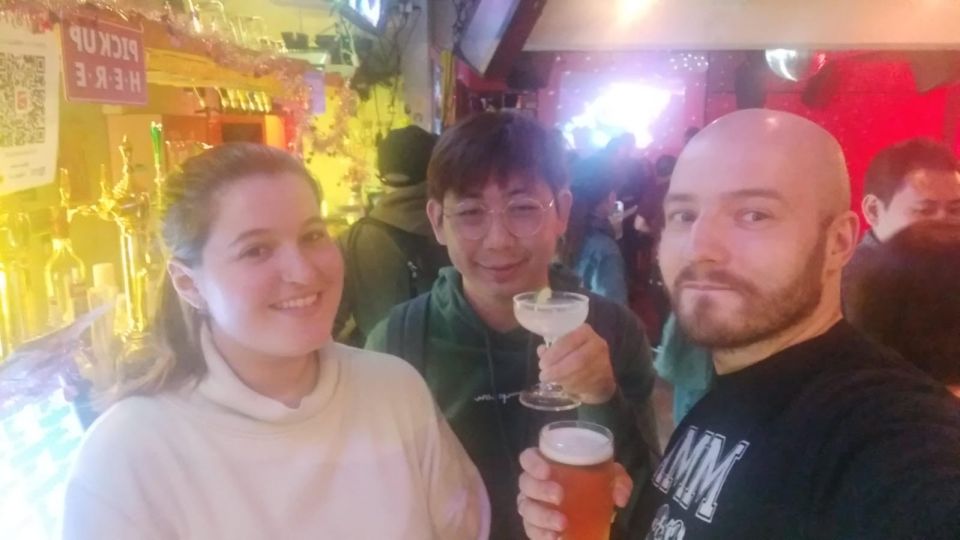
-
Japan’s historical attitudes towards LGBTQ+ individuals have fluctuated between acceptance and intolerance, with periods of celebration and marginalization.
-
Asakusa and Shinjuku’s LGBTQ+ neighborhoods have long served as hubs of community, resilience, and self-expression for Tokyo’s queer population.
-
Tokyo’s LGBTQ+ dining and nightlife scenes reflect the community’s rich cultural tapestry, blending traditional Japanese hospitality with progressive ideals of inclusion.
-
The concepts of honne and tatemae have shaped the LGBTQ+ experience in Japan, leading to the need for greater visibility and acceptance.
-
Despite past challenges, Tokyo’s LGBTQ+ community has demonstrated remarkable resilience, driving progress towards a more diverse and inclusive future.
Historical Perspectives on LGBTQ+ in Japan
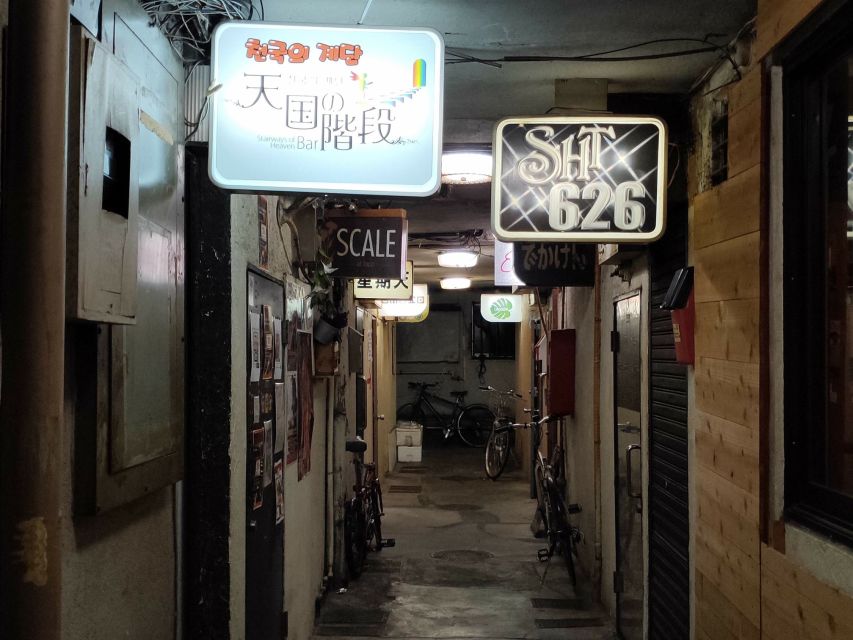
Japan’s historical view of the LGBTQ+ community has been complex, with both periods of acceptance and intolerance throughout its long history.
In ancient times, same-sex relationships were often celebrated, with figures like the samurai warriors engaging in intimate partnerships.
However, as Western influences increased in the 19th century, Japan’s attitudes shifted, and homosexuality became more stigmatized.
Despite this, the LGBTQ+ community continued to thrive in underground subcultures, particularly in vibrant urban hubs like Tokyo.
Today, while Japan still grapples with societal attitudes and legal recognition, the LGBTQ+ community has become increasingly visible, with a growing acceptance, especially among younger generations.
You can also read our reviews of more tours and experiences in Tokyo.
Exploring Asakusa’s LGBTQ+ Heritage
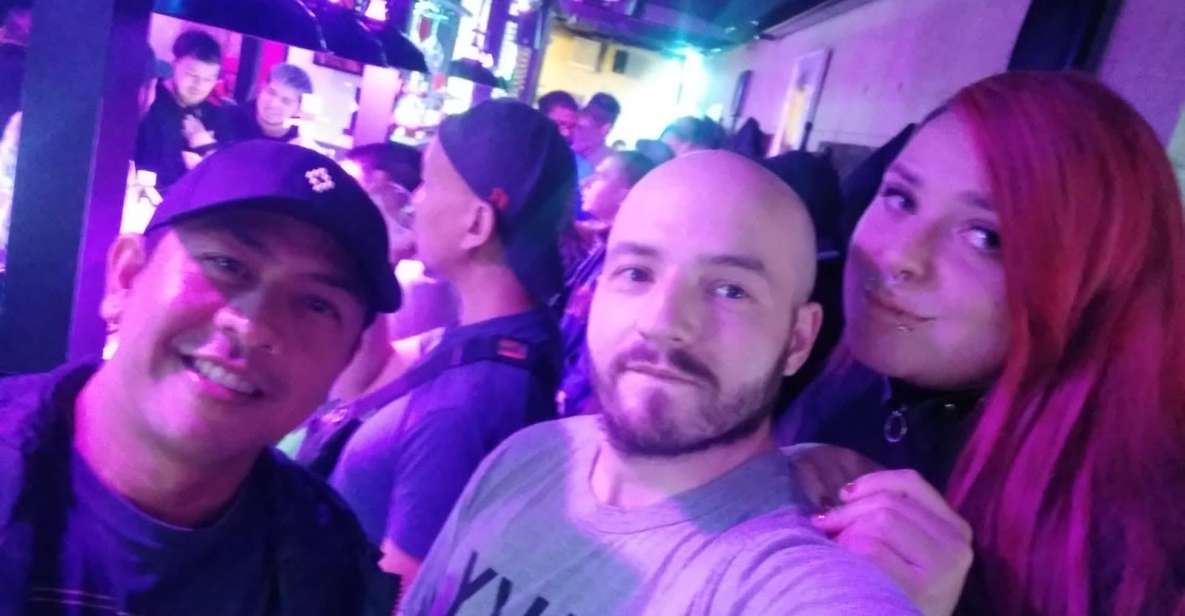
Asakusa, one of Tokyo’s most iconic neighborhoods, boasts a rich tapestry of LGBTQ+ history that remains largely untold to visitors.
This vibrant area was once a haven for the city’s gender non-conforming individuals, who found acceptance and community in the district’s numerous teahouses and entertainment venues.
While the LGBTQ+ scene has shifted over the decades, traces of this legacy can still be seen in the intricate architecture and bustling streets.
Guided tours offer a unique opportunity to uncover Asakusa‘s hidden queer past, from the legendary cross-dressing entertainers who once graced the stage to the underground networks that provided support and sanctuary.
Exploring this multifaceted history sheds light on the resilience and diversity of Tokyo’s LGBTQ+ community.
Shinjuku’s Vibrant Gayborhood
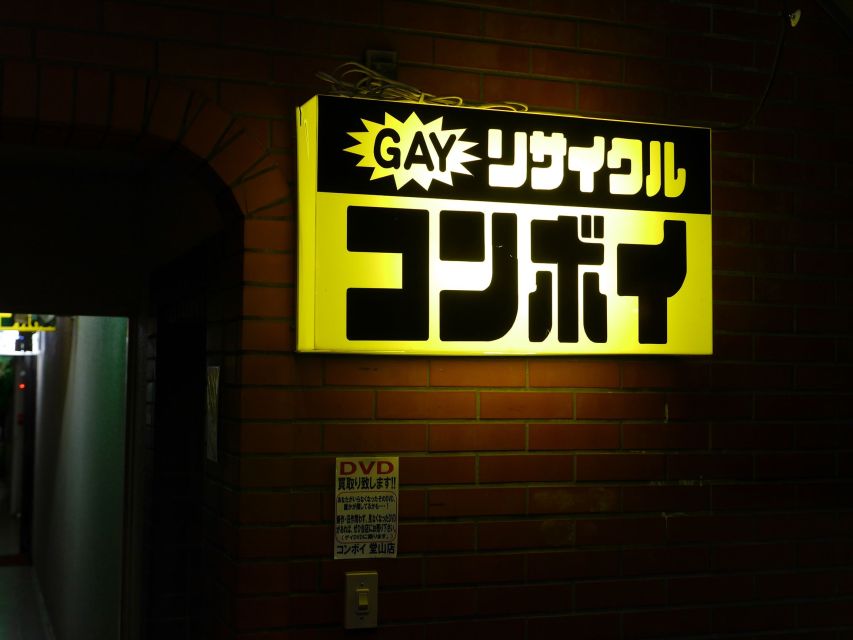
Shinjuku’s 2-chome district stands as the largest and most vibrant gayborhood in Japan, a testament to the perseverance and resilience of Tokyo’s LGBTQ+ community. This vibrant enclave boasts a rich history, from the post-war days when it served as a safe haven for queer individuals to the present, where it thrives as a hub of LGBTQ+ nightlife and culture.
The neighborhood’s allure lies in its diversity, with a multitude of bars, clubs, and cafes catering to various LGBTQ+ identities and preferences.
There is a sense of community, where LGBTQ+ you can freely express themselves without fear of judgment or discrimination.
The landscape is ever-evolving, as new establishments rise and existing ones adapt to the changing needs of the community.
Dining and LGBTQ+ Culture
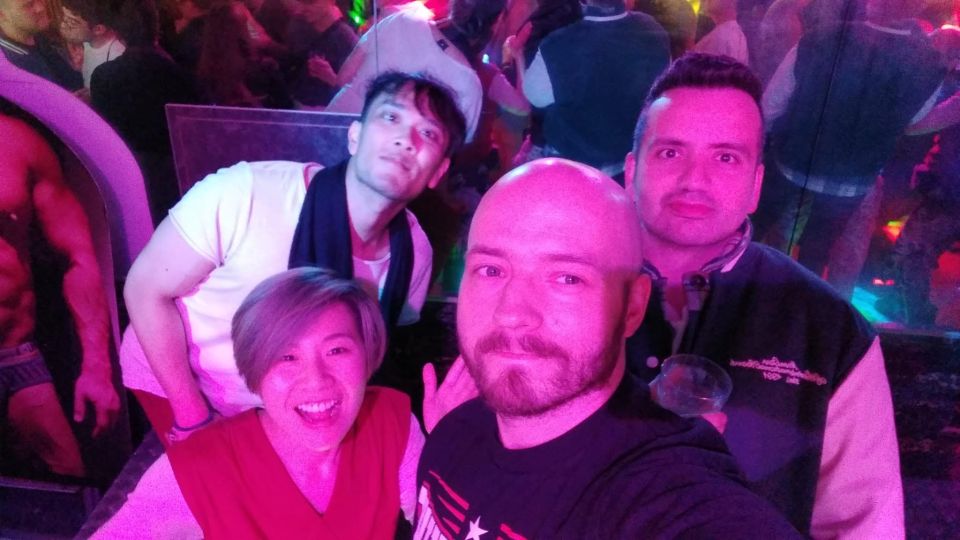
Dining experiences in Tokyo’s LGBTQ+ venues often showcase the community’s rich cultural tapestry, blending traditional Japanese hospitality with progressive ideals of inclusion and self-expression.
Many local restaurants cater to the LGBTQ+ crowd, providing a welcoming space to savor delectable Japanese cuisine while enjoying the company of like-minded individuals.
These dining experiences go beyond just the food, serving as hubs for cultural exchange, social networking, and the celebration of diversity.
Whether it’s sharing a hot pot or sipping craft cocktails, the LGBTQ+ dining scene in Tokyo offers a unique opportunity to take in the vibrant and ever-evolving fabric of the city’s queer landscape.
More Great Tours NearbyNightlife and LGBTQ+ Community

Extending beyond the realm of dining, Tokyo’s LGBTQ+ community has long found refuge and revelry in the city’s vibrant nightlife scene, where queer-affirming bars, clubs, and social spaces have flourished in the face of societal norms.
From the iconic Shinjuku’s 2-chome, the largest gayborhood in Japan, to hidden gems tucked away in backstreets, these establishments have served as beacons of acceptance and celebration.
They’ve provided a safe haven for individuals to express their true selves, foster meaningful connections, and find solace in a community that understands their lived experiences.
As the sun sets, Tokyo’s LGBTQ+ nightlife scene comes alive, pulsating with the beat of resilience, community, and a relentless pursuit of self-expression.
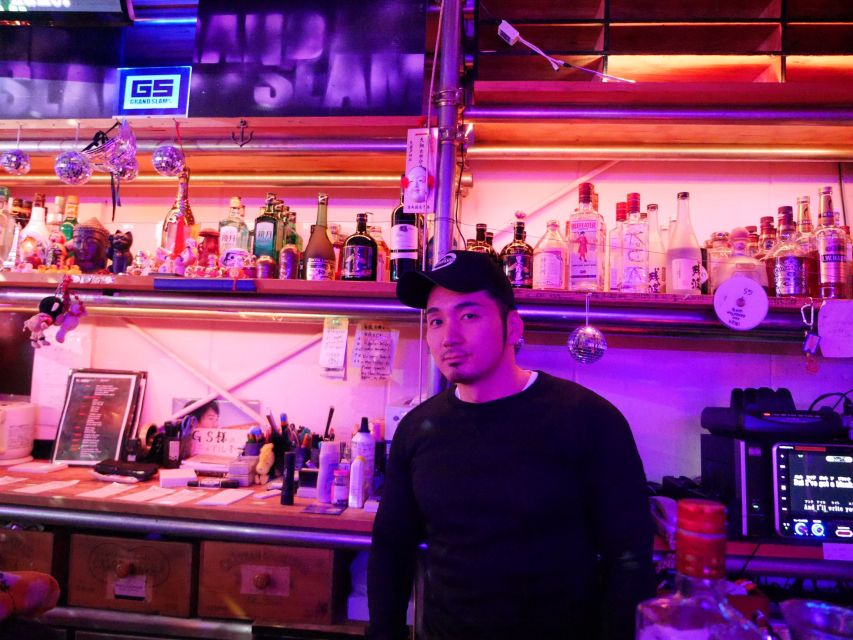
Deeply ingrained within Japan’s cultural fabric, the concepts of honne and tatemae have long shaped the nation’s approach to LGBTQ+ identity and acceptance, often creating a complex and nuanced landscape for the community to navigate.
Honne refers to one’s true, inner feelings and desires, while tatemae represents the public facade and socially acceptable behaviors. This dichotomy has manifested in Japan’s historical treatment of LGBTQ+ individuals, who’ve often felt compelled to conceal their authentic selves in the public sphere to conform to societal expectations.
However, in recent decades, the LGBTQ+ community has begun to challenge these norms, advocating for greater visibility and acceptance within Japanese society.
Resilience and Progress in Tokyo’s LGBTQ+ Scene
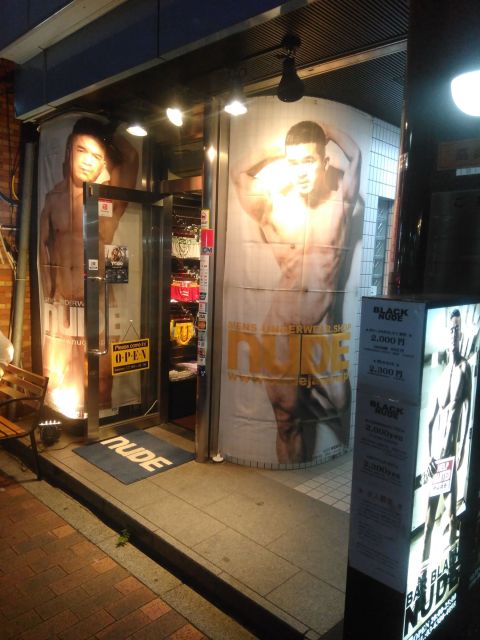
Despite the long-standing cultural norms that have often constrained Tokyo’s LGBTQ+ community, the city’s vibrant scene has shown remarkable resilience, with the community steadily carving out greater visibility and acceptance in recent decades.
From the emergence of Tokyo’s pioneering gay bars in the 1960s to the increasingly prominent LGBTQ+ events and organizations of today, the community has persevered through societal challenges.
Key milestones include:
-
The 1973 founding of Japan’s first LGBTQ+ rights organization, the ‘Myiako no Kai’.
-
Tokyo’s annual Pride parade, which has grown from a small gathering in the 1990s to a lively celebration attracting tens of thousands.
-
The growing acceptance and representation of LGBTQ+ individuals in Japanese media and popular culture.
This remarkable progress attests to the strength and determination of Tokyo’s LGBTQ+ community.
Embracing Diversity: Tokyo’s LGBTQ+ Present and Future

Against the backdrop of Tokyo’s long-standing cultural norms, the city’s LGBTQ+ community has come to embrace its diversity, carving out greater visibility and acceptance in recent years.
Once relegated to the shadows, Tokyo’s queer spaces have blossomed, from vibrant Pride parades to a thriving network of LGBTQ+-friendly businesses and organizations.
While pockets of social conservatism remain, the city has witnessed a gradual shift in attitudes, with more young people openly expressing their identities.
As Tokyo looks to the future, its LGBTQ+ community continues to push for greater equality and representation, leveraging the city’s innovative spirit to build a more inclusive tomorrow.
Frequently Asked Questions
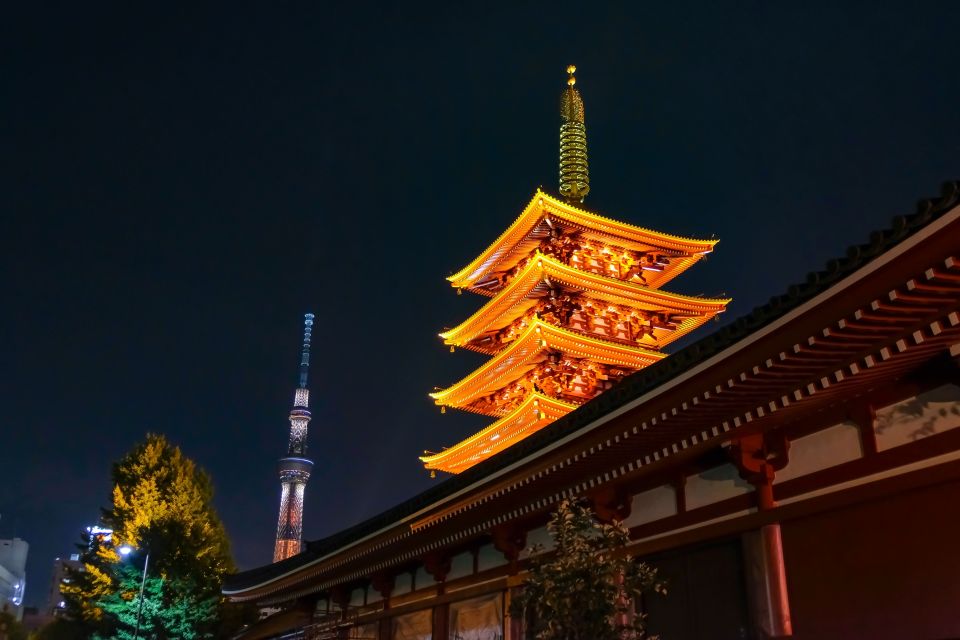
What Is the Significance of the Rainbow Flag in Japan?
The rainbow flag is a powerful symbol of LGBTQ+ pride and visibility in Japan, representing the community’s struggle for acceptance and the country’s gradual shift towards greater LGBTQ+ rights and representation over the past few decades.
How Do Lgbtq+ Individuals Balance Their Identities in Japan?
LGBTQ+ individuals in Japan often navigate a delicate balance, privately embracing their identities while publicly conforming to societal norms – a complex dance of honne and tatemae that reflects the country’s traditional views and evolving acceptance.
What Are Some Lgbtq+ Organizations or Support Groups in Tokyo?
Tokyo has several LGBTQ+ organizations and support groups, such as the Japan Alliance for LGBT Legislation and the Rainbow Pride Japan, which advocate for LGBTQ+ rights and provide community resources. These groups play a vital role in Tokyo’s vibrant LGBTQ+ scene.
How Has the Lgbtq+ Community Influenced Japanese Pop Culture?
The LGBTQ+ community has significantly influenced Japanese pop culture, introducing new perspectives and narratives that challenge traditional norms. From anime and manga to music and fashion, LGBTQ+ themes and characters have become increasingly visible and celebrated in mainstream Japanese media.
What Are the Legal Protections for Lgbtq+ Individuals in Japan?
Japan’s LGBTQ+ individuals enjoy limited legal protections, with same-sex marriage still unrecognized nationwide. However, some cities offer partnership certificates, and discrimination in employment is prohibited in certain regions, reflecting ongoing societal shifts.
Recap
Tokyo’s LGBTQ+ community has weathered a complex history, yet its resilience and innovative spirit have shaped a more inclusive future.
From vibrant enclaves like Shinjuku’s 2-chome to embracing diversity, the community continues to navigate societal norms while making strides in visibility and acceptance, carving out a vibrant LGBTQ+ culture that celebrates the city’s progressive ideals.
You can check availability for your dates here:More LGBTQ-Friendly in Tokyo
More Tour Reviews in Tokyo
- Tokyo Traditional Food Tour in a Small Group
- Private 1 Day Tour to Nikko: Onsen, UNESCO Shrines and Nature
- Tokyo 6 Hr Private Guided Tour & Rickshaw Experience
- Private Breakfast Tour at Tsukiji Outer Market
- Japan Autumn & Winter Illuminations Discovery Tour (12 Days)
- Old and New Tokyo Full Day Private Tour
Not for you? Here's more nearby things to do in Tokyo we have reviewed
- Tokyo Traditional Food Tour in a Small Group
- Private 1 Day Tour to Nikko: Onsen, UNESCO Shrines and Nature
- Tokyo 6 Hr Private Guided Tour & Rickshaw Experience
- Private Beginner Japanese Cooking Class Near Tokyo
- Private Breakfast Tour at Tsukiji Outer Market
- Japan Autumn & Winter Illuminations Discovery Tour (12 Days)
- Old and New Tokyo Full Day Private Tour
- 【Private】Sushi & Ramen Cooking & Sake Set in Tokyo!(+Recipe)
- Private 1 Day Tour to Kamakura: Sea, Temples, and Coastal Scenery
- Tokyo Castle & Imperial Palace , Historical Walking Tour
- One Way Shuttle Van Transfer, Tokyo⇔Hakone Area
- Barrier Free Transportation in Hakone, No Guide (Tokyo Dep.)
